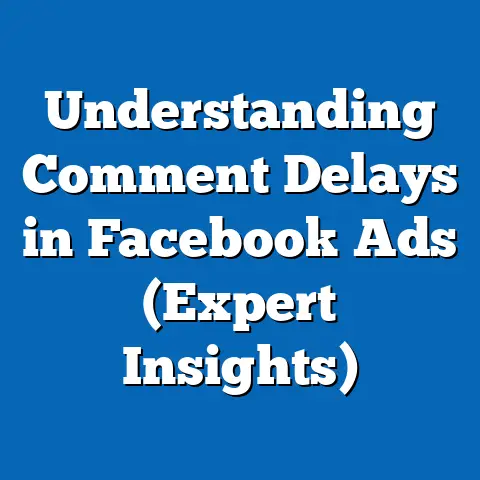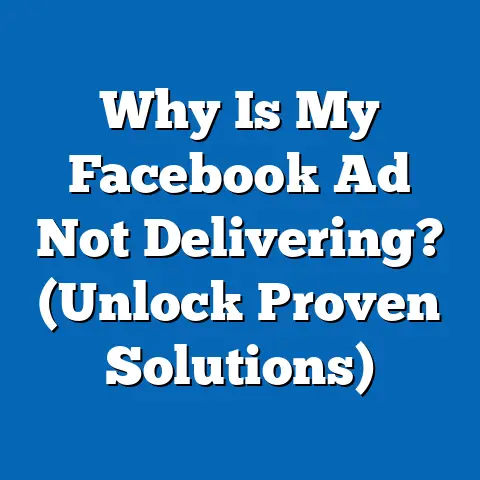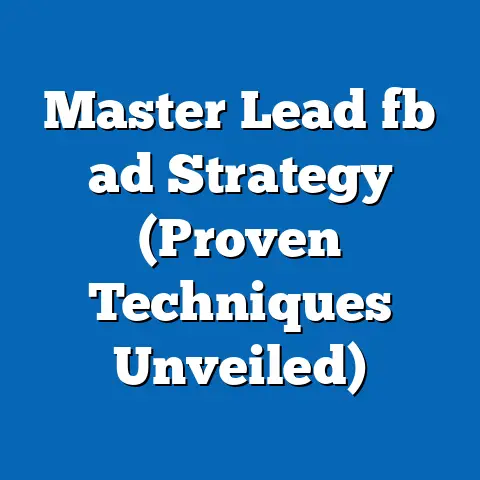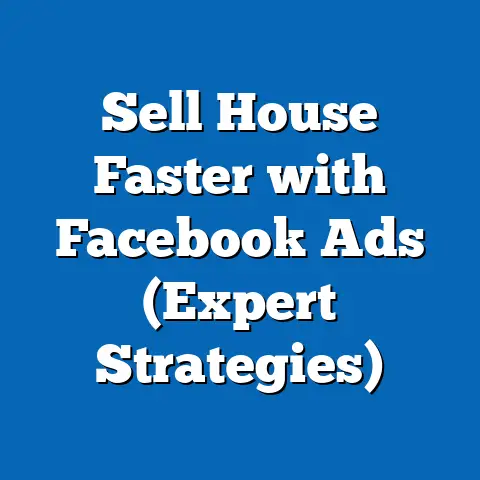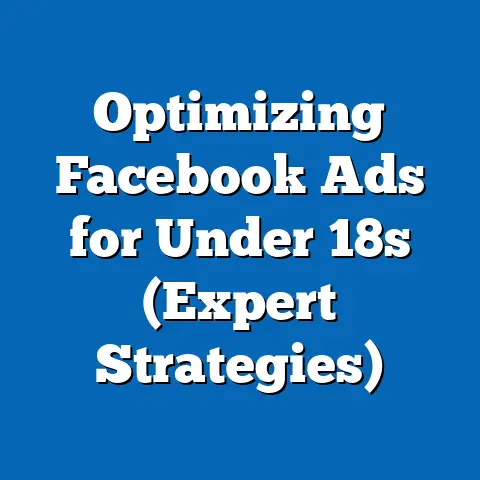Boost Network Marketing Leads with Facebook Ads (Proven Tactics)
The life of a network marketer can feel like a constant uphill battle. You’re trying to build a team, sell products, and stand out in a sea of other network marketers all doing the same thing. The old-school methods – the home parties, the friend and family pitches – they just don’t cut it anymore. They’re exhausting, and frankly, they can damage your personal relationships.
I remember when I first started in network marketing, I relied heavily on these traditional methods. I spent countless hours calling people, organizing events, and trying to convince everyone I knew that my opportunity was the “next big thing.” The results were… underwhelming. I burned out quickly, and my business was stagnating.
That’s when I discovered the power of Facebook Ads. At first, it seemed intimidating, a complex platform with endless options. But I quickly realized that with the right approach, Facebook Ads could be a game-changer. It allowed me to reach a much wider audience, target specific demographics, and generate leads while I slept.
If you are a network marketer, you’re likely facing the same challenges. The struggle to generate consistent, high-quality leads is real. The market is saturated, and everyone is vying for attention. Traditional methods are no longer enough. That’s where Facebook Ads come in. When executed correctly, Facebook Ads can not only boost your visibility but also attract qualified leads who are genuinely interested in your network marketing opportunity.
Key Takeaway: Facebook Ads can be a powerful tool for network marketers struggling to generate leads, but it requires a strategic approach.
Understanding the Facebook Ads Platform
Facebook Ads is more than just throwing money at a platform and hoping for the best. It’s a sophisticated advertising ecosystem with incredible reach. With billions of active users, Facebook provides access to a massive audience. But that’s just the beginning. The real power of Facebook Ads lies in its unparalleled targeting capabilities.
You can target people based on their demographics (age, gender, location), interests (hobbies, favorite brands, pages they like), behaviors (purchase history, online activity), and even their connections (friends of people who like your page). This level of granularity is what makes Facebook Ads so effective.
For network marketers, targeting is crucial. You need to reach people who are not only interested in your product but also open to the idea of joining your team. This requires a deep understanding of your ideal customer and team member.
Let’s talk about ad formats. Facebook offers a variety of ad formats to choose from, each with its own strengths and weaknesses:
- Image Ads: Simple and effective for showcasing your product or brand.
- Video Ads: Highly engaging and great for telling a story or demonstrating a product.
- Carousel Ads: Allow you to showcase multiple products or features in a single ad.
- Collection Ads: Designed for e-commerce, allowing users to browse and purchase products directly from the ad.
- Lead Ads: Designed specifically for lead generation, allowing users to submit their information without leaving Facebook.
For network marketing, I’ve found that video ads and lead ads are particularly effective. Video ads allow you to connect with your audience on a personal level, sharing your story and the benefits of your opportunity. Lead ads make it easy for people to express their interest and provide their contact information.
I remember one campaign where I used a video ad to share my personal journey with a particular network marketing product. I talked about the challenges I faced, how the product helped me overcome them, and the impact it had on my life. The ad resonated deeply with my target audience, and I generated a flood of high-quality leads.
Key Takeaway: Understanding the Facebook Ads platform, its targeting options, and its various ad formats is essential for creating effective campaigns. Video ads and lead ads are particularly effective for network marketing.
Identifying Your Target Audience
This is where many network marketers go wrong. They try to target everyone, thinking that the more people they reach, the better. But that’s a recipe for disaster. You’ll end up wasting money on people who are not interested in your product or opportunity.
The key to successful Facebook Ads is to define your target audience. Who are you trying to reach? What are their pain points? What are their interests? What are their demographics?
Creating a customer persona is a great way to visualize your ideal customer and team member. Give them a name, an age, a profession, and a backstory. What are their goals? What are their challenges? What motivates them?
For example, let’s say you’re selling a health and wellness product. Your ideal customer might be a busy mom in her 30s who is struggling to lose weight and lacks energy. She’s interested in healthy eating, fitness, and natural remedies. She’s active on social media and looking for a solution that fits her busy lifestyle.
Once you have a clear understanding of your target audience, you can use Facebook’s Audience Insights tool to gather data and refine your targeting strategies. Audience Insights provides valuable information about the demographics, interests, behaviors, and connections of people on Facebook.
You can use this information to create custom audiences based on specific criteria. For example, you could create an audience of people who are interested in weight loss, fitness, and healthy eating. You could also create an audience of people who are friends of your existing customers.
I’ve found that layering targeting options is particularly effective. For example, instead of just targeting people who are interested in weight loss, I might also target people who are interested in specific fitness brands or who have recently purchased weight loss products.
Key Takeaway: Defining your target audience and using Facebook’s Audience Insights tool to gather data is crucial for creating effective targeting strategies. Layering targeting options can further refine your audience and improve your results.
Crafting Compelling Ad Copy and Creative
Once you’ve identified your target audience, the next step is to craft compelling ad copy and creative. Your ad is the first impression you make on potential customers and team members, so it needs to be attention-grabbing, persuasive, and relevant.
Storytelling is a powerful tool for creating an emotional connection with your audience. Share your personal journey, the challenges you faced, and how your product or opportunity helped you overcome them. Be authentic and relatable.
I remember one ad campaign where I shared my story of struggling with low self-esteem and how joining a network marketing company helped me gain confidence and financial independence. The ad resonated deeply with women who were feeling stuck in their current situations, and I generated a ton of leads.
When writing ad copy, focus on the benefits of your product or opportunity, not just the features. What problem does it solve? How will it improve their lives? Use strong verbs and persuasive language.
Here are some proven tactics for writing persuasive ad copy:
- Use a strong headline: Grab their attention immediately.
- Highlight the benefits: Focus on what they’ll gain.
- Create a sense of urgency: Encourage them to act now.
- Include a clear call to action: Tell them what you want them to do.
- Use social proof: Show them that others have had success.
Your visuals are just as important as your copy. Use high-quality images or videos that are visually appealing and relevant to your message. Avoid using stock photos that look generic and impersonal.
I’ve found that user-generated content (UGC) is particularly effective. UGC is content created by your customers or team members, such as testimonials, product reviews, or before-and-after photos. UGC is authentic and trustworthy, and it can be a powerful way to build social proof.
Key Takeaway: Crafting compelling ad copy and creative is essential for capturing attention and creating an emotional connection with your audience. Storytelling, highlighting benefits, and using high-quality visuals are key elements of effective ads.
Setting Up Effective Campaigns
Now that you have your target audience and your ad creative, it’s time to set up your Facebook Ads campaign. This involves selecting your campaign objective, setting your budget and schedule, and choosing your ad placements.
The campaign objective is the goal you want to achieve with your ad campaign. Facebook offers a variety of campaign objectives to choose from, such as:
- Awareness: Reach as many people as possible.
- Traffic: Drive traffic to your website or landing page.
- Engagement: Get people to like, comment, or share your ad.
- Leads: Collect leads through a lead form.
- Sales: Drive sales of your product or service.
For network marketing, I recommend focusing on lead generation or traffic. Lead generation allows you to collect leads directly through Facebook, while traffic allows you to drive people to your website or landing page where you can capture their information.
Your budget is the amount of money you’re willing to spend on your ad campaign. You can set a daily budget or a lifetime budget. I recommend starting with a small daily budget and gradually increasing it as you see results.
Your schedule is the time period during which you want your ad campaign to run. You can choose to run your ads continuously or set a specific start and end date. I recommend testing different schedules to see what works best for your target audience.
A/B testing is a crucial part of optimizing your ad campaigns. A/B testing involves creating multiple versions of your ad and testing them against each other to see which one performs best. You can test different headlines, images, copy, and calls to action.
Key Performance Indicators (KPIs) are metrics that you use to measure the success of your ad campaign. Some important KPIs to track include:
- Reach: The number of people who saw your ad.
- Impressions: The number of times your ad was displayed.
- Click-through rate (CTR): The percentage of people who clicked on your ad.
- Cost per click (CPC): The average cost of each click on your ad.
- Cost per lead (CPL): The average cost of each lead generated by your ad.
- Conversion rate: The percentage of leads who become customers or team members.
Key Takeaway: Setting up effective campaigns involves selecting the right campaign objective, setting a realistic budget and schedule, and choosing appropriate ad placements. A/B testing and tracking KPIs are essential for optimizing your campaigns and maximizing your ROI.
Leveraging Retargeting Strategies
Retargeting is one of the most powerful tools in the Facebook Ads arsenal. It allows you to re-engage users who have previously interacted with your brand. These are people who have visited your website, watched your video, or liked your page. They’ve already shown an interest in what you have to offer, so they’re much more likely to convert.
The way retargeting works is through the Facebook Pixel. The Facebook Pixel is a small piece of code that you install on your website. It tracks the actions that people take on your website, such as visiting pages, adding items to their cart, or making a purchase.
You can then use this data to create custom audiences of people who have taken specific actions on your website. For example, you could create an audience of people who have visited your product page but haven’t made a purchase.
You can then create retargeting campaigns that target these custom audiences. For example, you could show ads to people who visited your product page but didn’t make a purchase, reminding them of your product and offering them a discount.
For network marketers, retargeting can be incredibly effective for re-engaging potential customers and team members who have shown an interest in your product or opportunity. You can show them testimonials, case studies, or success stories to further convince them.
I remember one retargeting campaign where I showed ads to people who had visited my landing page but hadn’t filled out the lead form. The ads featured testimonials from satisfied customers and highlighted the benefits of joining my team. The campaign resulted in a significant increase in leads.
Key Takeaway: Retargeting is a powerful tool for re-engaging users who have previously interacted with your brand. Using the Facebook Pixel to track website visitors and create custom audiences is essential for effective retargeting campaigns.
Conclusion
Facebook Ads can be a game-changer for network marketers who are struggling to generate leads. By understanding the platform, defining your target audience, crafting compelling ad creative, setting up effective campaigns, and leveraging retargeting strategies, you can transform your lead generation efforts and build a thriving network marketing business.
I’ve seen firsthand the power of Facebook Ads, but it’s important to remember that it’s not a magic bullet. It requires effort, experimentation, and a willingness to learn. The digital landscape is constantly evolving, so it’s important to stay up-to-date on the latest best practices and trends.
Don’t be afraid to experiment and try new things. A/B test your ads, track your KPIs, and make data-driven adjustments. The more you learn and adapt, the more successful you’ll be.
So, embrace the power of Facebook Ads, implement these proven tactics, and watch your network marketing business soar. The leads are out there, waiting to be discovered.

